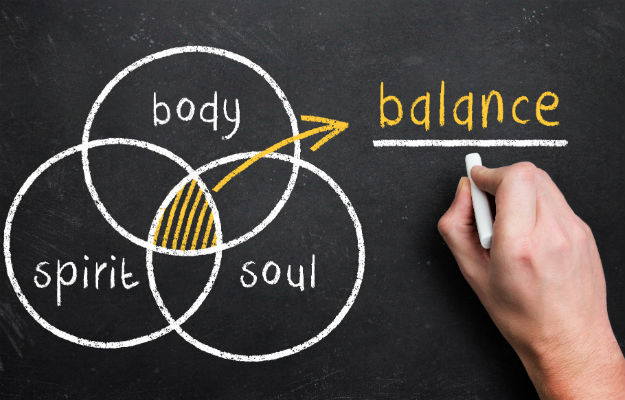
In this blog, we’ll celebrate the origins of the 12 steps, as well as covering some facts and myths about 12 step addiction treatment.
A Brief History of the 12 Steps – Ohio to the World
Originally published in 1939 in the first edition of Alcoholics Anonymous, the 12 steps were developed from 1935 onwards, following a meeting between a New York stockbroker, Bill Wilson, and a physician from Ohio, Dr Bob Smith. Both men were alcoholics and together founded the fellowship of Alcoholics Anonymous (AA). With the help of early AA members, they wrote AA’s basic text. The book combined personal testimonies from many original members of AA who had recovered from alcoholism, as well as specific guidance on how they achieved sobriety. The main purpose of the book was to describe the 12 steps, so other alcoholics could recover too.
By the time the second edition of Alcoholics Anonymous was published in 1955, there were 6000 AA meetings with a membership of more than 150,000 recovered alcoholics. Groups had formed in around 50 countries, with meetings being held in all American States, Canada, Britain, the Scandinavian countries, South America and Australia. From the first AA meeting in Ohio in 1935, the fellowship had spread worldwide largely thanks to the printing and distribution of the Alcoholics Anonymous book and subsequent media interest.
For at least 70 years, the 12-step approach has been used within addiction treatment centres. Typically combined with other methods of rehabilitation, as well as physical detoxification for people who are physically addicted to alcohol or drugs, the 12 steps are one of the leading methodologies applied within professional addiction care.
Over the years, the 12 steps have been adapted to treat and support people with many other addictive disorders – including drug addiction, eating disorders, gambling addiction, debating and spending addiction, co-dependency, sex and love addiction, as well as programmes to support the families of addicts. It remains one of the most effective and available methods of peer support in addiction recovery, as well as a well-established approach to specialist addiction care.
At UKAT, we utilise 12 step addiction treatment across our rehabs, as it’s proven to be beneficial for the majority of our clients. We also use many other therapeutic techniques in our intensive programmes, to give people the best chance of building a solid recovery. For clients who seek a unique alternative to 12 step treatment, we have also devised our Strengths model, available at our Oasis Runcorn clinic. Please call us for more information about our nationwide treatment and facilities.
Facts about 12 Step Addiction Treatment
Fact – 12 step addiction treatment is abstinence-based
Step 1 of the 12-step programme looks at what happened to you in active addiction – particularly the extent of your illness and impulsive behaviours, as well as the damage that addiction has done to your health, relationships and life opportunities. By examining the consequences of your addiction, you will draw your own conclusions about whether you have the ability to control your use or not.
With respect to alcohol and recreational drug use, the 12 steps suggest complete abstinence as the route to sustainable recovery. The central premise is that addicts have a physical reaction to addictive substances once they are ingested, which triggers cravings to use more.
With prescription drug addiction, the treatment approach is tailored depending on the types of medication people are abusing. Typically, clients are supported to detox safety from addictive opioids and benzodiazepines, whilst continuing with prescribed medications that are essential in the treatment of another health condition.
There’s a slightly different approach to abstinence from process addictions, depending on the nature of the addiction. With gambling, for example, it’s recommended to stop betting altogether, as it’s a non-essential activity. With all types of eating disorders, compulsive spending or workaholism, abstinence is defined individually comprising a set of healthy practices and personal boundaries.

Fact – the 12 steps invite people to define sources of help
Central to 12 step addiction treatment is the idea that you cannot go through addiction recovery alone. Addicts need support and inspiration to recover. It’s about encouraging people to identify problems they are having, then ask for help before issues escalate and trigger cravings.
The sources of help are unique to each individual. For some, it’s about committing to a detox, rehab and aftercare programme. For others, it’s about ongoing involvement with addiction recovery groups in the community, where peer support is readily available. The 12 steps also encourage people to develop their own understanding of spirituality, through practices including honest personal reflection, prayer and meditation.
Fact – you will examine past experiences in 12 step addiction treatment
It’s referred to as taking inventory in the 12 steps – a process by which people examine significant experiences in their past with the aim to look for behaviour patterns that need to change in recovery. Step 4 includes a thorough examination of sources of conflict in relationships, the harm to yourself and others in addition, as well as sources of anger, shame, regret and fear.
Examining your past is not intended to be judgmental. It is not about making you feel ashamed about things that have happened while suffering addiction. The purpose is to allow you to get help with difficult events in your past, as well as to identify what needs to change in order to stay free from addiction.
Fact – the 12 steps suggest a proactive approach to supporting other addicts

Myths about 12 Step Addiction Treatment
Myth – the 12 steps are the only way to recover from addiction
12 step addiction recovery is one of many approaches proven to be effective in transforming the lives of addicts and their families. Alcoholics Anonymous recognise this fact, claiming that whilst the 12 steps have been incredibly powerful for millions of people, they have ‘no monopoly’ on ‘therapy for the alcoholic’.
At UKAT, the majority of addiction treatment centres use 12 step therapy as part of their programme. However, we always use a wide range of other techniques in our residential rehab clinics including motivational interviewing, psychodynamic therapy, CBT, DBT, integrative therapy, family therapy, art therapy, mindfulness, music therapy and much more besides. We believe this holistic approach gives our clients the best possible chance of a stable and fulfilling recovery.
Myth – the 12 steps require you to be religious
The 12 steps, as originally written, refer to a ‘Power greater than ourselves’ and to ‘God’. However, the Alcoholic Anonymous book defines this in greater detail, as ‘your own conception of God’. You do not need to define ‘God’ in religious terms – it’s simply a way of paraphrasing the importance of seeking ongoing support, when in recovery. Step 2 looks specifically at the concept of turning to powerful sources of help and inspiration in addiction recovery.
Across the globe, there are atheists, agnostics and members of all different religious faiths in 12 step fellowships and addiction rehabs. It’s an approach that is diverse and multinational, appealing to people of all ages, gender and sexual orientations, race and socio-economic backgrounds.
To read more about the origins and applications today of 12 step addiction treatment, please visit the UKAT 12 step therapy page.
Get in touch with the UKAT Admissions team, to discuss detox, rehab, counselling and ongoing aftercare for addiction.

